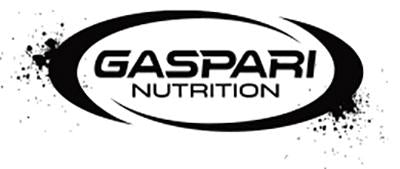What Is The Paleo Diet?
The Paleo diet is a type of primitive diet that has become widely known in recent years. It is based on the idea that humans should eat a diet consisting only of natural foods. This does not simply mean “foods from a natural source,” because all food comes from a natural source. However, there is a question of how processed a particular food might be. The name of the diet tells us quite a bit. The whole idea of this diet is to eat the kinds of things that paleolithic man would have eaten. This rules out foods that come from a natural source, but are heavily processed. Mostly, this diet consists of meat, vegetables, nuts, and fruit. Grains of any kind are disallowed, as is dairy and processed sugar.
The History of The Paleo Diet
The Paleo diet was not invented by just one person, but by a series of researchers who built their conclusions upon the work of those who came before them. Nutritionists in the 1890s first began to speculate that a diet consisting of pure natural foods might be preferable. Certainly, other people have had this idea in the past, as it is kind of obvious. However, it wasn’t until 1975 that someone actually wrote a book about the idea. That “someone” was a gastroenterologist named Walter Voegtlin. The rather lengthy title of the book was “Diet Cults: The Surprising Fallacy At The Core Of Nutrition Fads And A Guide To Healthy Eating For The Rest Of Us.” Despite this less-than-catchy title, Voegtlin ideas turned out to be sound in both theory and practice. Since then, many other researchers and authors have expanded upon his work, creating a list too long to read.
 What Can I Eat on The Paleo Diet?
What Can I Eat on The Paleo Diet?
There are actually quite a few things that you can eat on the Paleo diet. The general rule of thumb is: “If a caveman could have found it, you can eat it.” This is why processed foods like cheese and milk are not allowed. No caveman would have just found a wild block of cheese or a naturally-occurring jug of milk. This means that pretty much all vegetables are on the menu, as well as all meats. Eggs, nuts, and seeds are also allowed. Mushrooms are another little delicacy that you are allowed to indulge in, and fruits make an excellent substitute for high-sugar foods.
How Do You Know What Is and Isn’t Paleo?
As stated before, you just look at a type of food and ask yourself if a caveman would eat it. To clarify, the term “Paleo” is short for “Paleolithic.” It refers to the Paleolithic era of human history; before we learned how to grow crops or domesticate animals. I want you to conjure up, in your mind, an image of a caveman named Ugg. When you are considering what to eat on your Paleo diet, ask yourself: “Would Ugg Eat This?” Ugg would be suspicious of anything he wasn’t familiar with, so processed foods of any kind might send him into a rage, thinking that you were trying to poison him.
 Why The Paleo Diet Works
Why The Paleo Diet Works
There are several reasons why this diet works. One of the reasons is that you are working with the body’s natural tendencies rather than working against them. Anytime you try to force your body to do something unnatural it isn’t likely to pan out very well. When you look at the entirety of human history, we actually spent a lot more time as hunter-gatherers than most people realize. It is believed that 80-90% of human history was spent living a hunter-gatherer existence.
How The Paleo Diet Works
The Paleo Diet works because it is a remarkably low-carb diet. While there are carbohydrates to be found in starchy vegetables like potatoes and squash, a Paleo diet is likely to be very low in carbohydrates. Due to a large amount of bread in the modern diet, most of us consume a lot more carbs than we really need. Carbs are concentrated energy, and you just don’t need that much on a day-to-day basis. With fewer carbs to burn for energy, your body will turn to its next-best energy resource: Fat. For this reason, people on the Paleo diet tend to be leaner and more energetic.
 Is The Paleo Diet Safe?
Is The Paleo Diet Safe?
I think it is safe to say that this diet is very safe. Since you are eating in the way that humans are supposed to eat, I don’t see any potential for side effects. Getting rid of sugar and processed foods certainly never hurt anyone. As for getting rid of carbs as an energy source, A person can easily make up for the lost carbs with a starchy vegetable. I recommend growing squash, as it is extremely easy to grow and yields a lot of food over the entire growing season. With 1-3 plants, you can have all the squash you want and then some.
The high-protein nature of this diet could be bad for people with certain health conditions, but I doubt it. Still, anyone with a sensitive condition should definitely check with their doctor before beginning a Paleo-type diet. It would also be a good idea to avoid eating a whole lot of fatty meats like bacon. Bacon is allowed, but don’t eat it every day.
Conclusion
I honestly can’t find anything wrong with this diet. It seems like a very good choice, and I think I am going to try it myself as soon as possible. I have always felt that a natural diet is the best, although I disagree with one tiny aspect of this diet. The Paleo diet generally forbids legumes like beans and peanuts. I don’t really see why these would be excluded since they are natural foods that require no special processing. However, it is true that they have a lot of carbs and calories without a whole lot of nutritional value. Overall, I recommend this one highly.
The post The Beginner’s Guide To The Paleo Diet appeared first on Gaspari Nutrition.



Share:
The Top Six Trending Diets
How To Calculate Body Fat Percentage